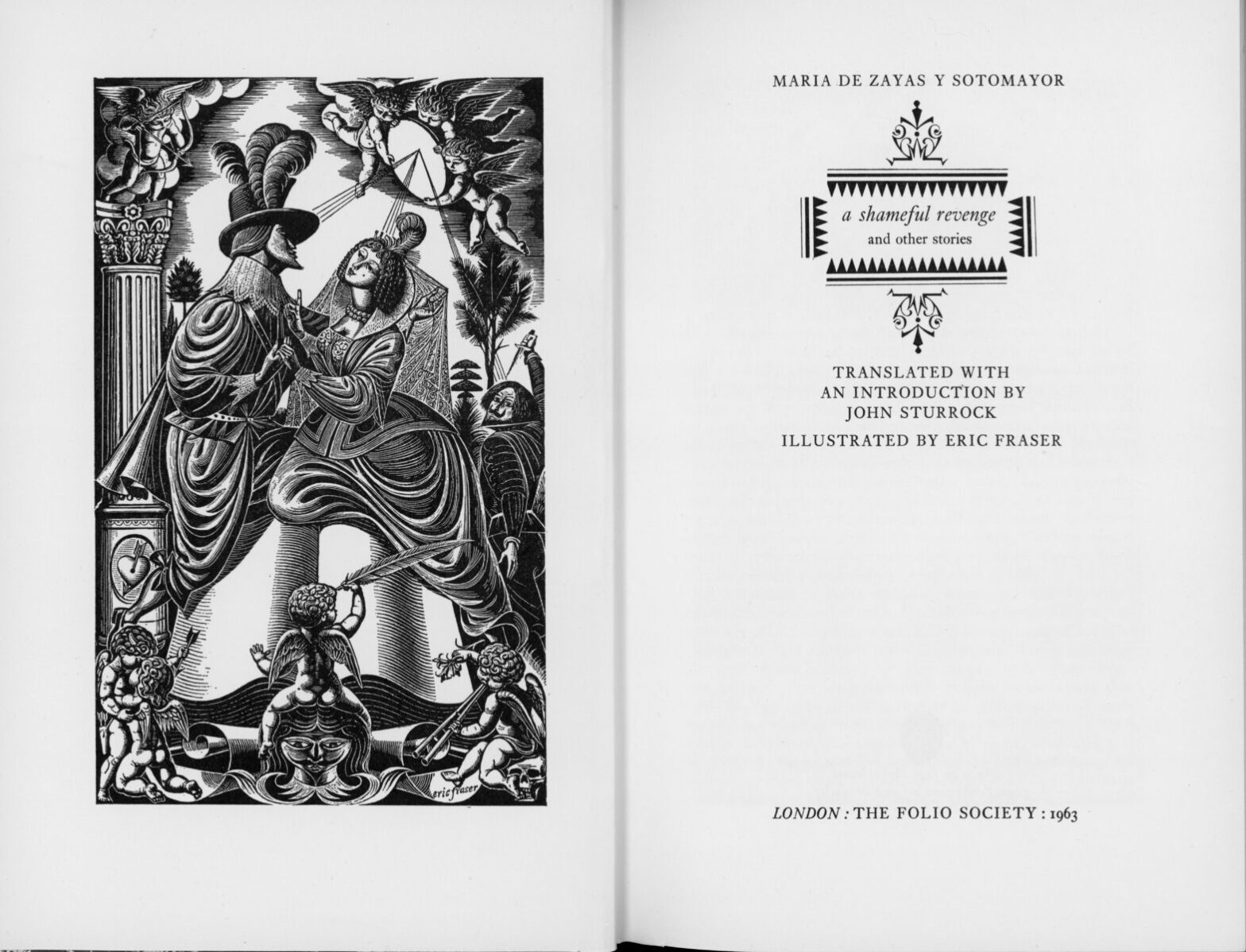María de Zayas y Sotomayor (born Sept. 12, 1590, Madrid [Spain]—died c. 1661) was one of the most important of the minor 17th-century Spanish novelists and one of the first women to publish prose fiction in the Castilian dialect.
Little is known of Zayas’ life except that she was born into a noble family in Madrid and may have lived in Zaragoza, where her work was published. It is not known whether she married or when and where she died.
Her novels about love and intrigue, which used melodramatic and frequently horrific elements, were widely read and very popular. Novelas amorosas y ejemplares (1637; “Novels of Romance and Exemplary Tales”) is a collection of short novels about the romantic complications of married life, ostensibly told one evening to amuse a sick woman. The stories are mostly about women who are mistreated by husbands or seducers. Novelas y saraos (1647; “Novels and Soirees”) and Parte segunda del sarao y entretenimientos honestos (1649; “Soiree Part Two and Decorous Amusements”) are sequels. In many of her stories Zayas accused Spanish society of leaving women without the information or emotional strength to resist seduction and abuse. https://www.britannica.com/biography/Maria-de-Zayas-y-Sotomayor
In his introduction to
John Sturrock tells us that the author “was, by the standards of the time, an educated woman, and since women then received very little formal education she was presumably self-taught. She is very ready with an apt classical reference in her stories…..”
“There are two great motive forces [in these] – love and honour. Love is seen, conventionally enough, as a blind and irresistible force which drives women to destruction, while honour is its severe and apparently inevitable concomitant; the second exists as the only way to check the ravages of the first. But it is in her attitude to the concept of sexual honour that Maria shows originality. The concept is essentially a masculine one of course. Men alone have honour; women have their chastity, a reputation even, but should they succumb and lose them then there is nothing they can do about it except wait for punishment. It is the husband, the brother or the father who is dishonoured when a wife, a sister or a daughter is seduced, and it is up to them to wipe out the stain with the blood of the guilty parties. Thus it is that a woman is quite liable to meet her death at the hands of her nearest and dearest. Maria … [says] that men are deceitful, they wreak their nefarious purposes on the weaker sex by duplicity, by making promises they have no intention of fulfilling. Then they subscribe to a double standard of morality, whereby their own infidelities are considered very dashing while those of their womenfolk are punishable by death.” (Sturrock)
As translator Sturrock claims that de Zayas’ prose style “would be impossible and probably undesirable to attempt to reproduce that too faithfully. She writes like a woman in a hurry, impatient often of the niceties of structure and balance. The translation then aims at simplification as much as fidelity, avoiding, at opposite ends of the spectrum, deliberate archaisms and obtrusive modern idioms.” One can only trust that he has been successful in his work.
There are stories in this Folio Society collection. I will feature these one at a time with minimal comment on the prose.
The first is “The Ravages of Vice”, in which we are told of carnage consequent upon deceitfully contrived alleged infidelity. The story races along with good action sequences and the occasional didactic element, such as parenthood where the step-child is loved at least equally as children of a couple: “This is how good married couples ought to behave if they want to live in peace, because a thousand quarrels and upsets arise out of the dislike husbands often feel for their wives’ children, and wives for their husbands’ children.”
Love, honour, deception, and retribution are all Maria de Sayas’s major themes featured in the tale.

Here is Eric Fraser’s faithful and powerful illustration to this story.


I love all of the beautiful books in your collection, Derrick. You have made excellent choices.
Those societal ills women faced back then are still rampant in many areas of the world.
Unfortunately so, Lavinia. Thank you very much
She was a woman before her time! I love that.
Indeed. Thanks very much, Dale
Fascinating review, Derrick. The double standard still has not changed as much as some might prefer. I love the illustrations.
Thank you very much, Pat
Thanks for bringing Zayas’ book to our attention and for your excellent review. As an educated woman from a noble family, she was able to give voice to millions of voiceless women of her time.
Thank you very much, Rosaliene
Thank you to this introduction to María de Zayas y Sotomayor. I had never heard of her, and she seems a remarkable woman. The illustrations are quite stunning.
Thank you very much, Merril
Another intriguing review with an equally interesting story about the author …
Thank you very much, Ivor
Fascinating. Thank you Derrick.
Much appreciated, Lakshmi
A joy to read your review! And to learn about María de Zayas y Sotomayor! So inspiring!


(((HUGS)))
Thank you so much, Carolyn XX
I had never heard of María de Zayas y Sotomayor. Thanks for the introduction. The stories sound chilling even if they end well.
That is very true, Laurie. Thanks very much
You have such a wonderful book collection.
Thank you very much, Gary
Yes, indeed, one can only hope…
Thank you very much, Sylvie
Thank you for introducing me to another writer from world literature.
Much appreciated, Liz
Translation is more tricky than many realise
Yes. Thanks very much, Sheree
Haven’t heard of her till now. Nice review Derrick.
Thanks very much, Arlene
This is certainly a unique collection of stories written by a woman in the seventeenth century. The illustrations are splendid.
Thank you very much, Dolly